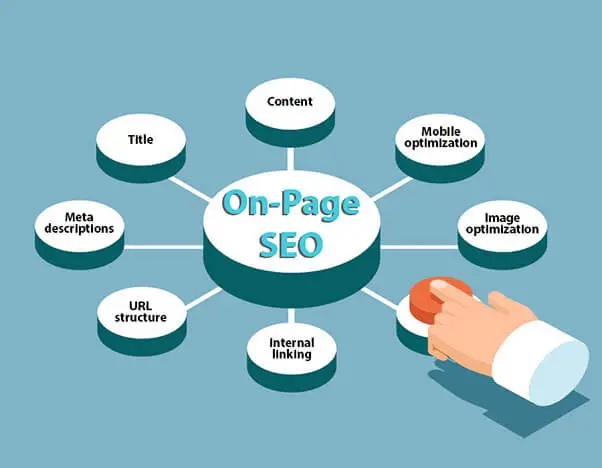On-Page SEO is the manner of optimizing web pages in order that they rank better in SERP and attract more traffic. This consists of improving things like titles, contents, key phrases, URLs, internal hyperlinks, images, and web page speed. The goal is to make every web page clear, useful, and easy for customers and search engines like google for better understanding. On Page optimizing means making changes inside the website. Let’s see what are the standard procedures to optimize the website.

Title tags
Create a clear, strong, keyword title that accurately reflects the content of the page. Title length should be in between 55–60 characters. There should be no spelling mistakes and it should be more attractive. Pixel length of title is 512.
Meta Description
A meta description is a summary of the intent of the page. It is shown below the meta title and helps the user to know about the website. The maximum characters must be in between 155-160. In the case of a blog article, the characters should be up to 150. There should be no grammatical errors and spelling mistakes. The pixel length should be up to 1024 and also have to include our focusing keyword.
Headings H1, H2, H3…
Headings used to organize content logically, making it easier for search engines and users to be understood. H1 tag should be given only once. We can give other tags more than once. It is better to give in sequence. Include focusing keywords in the H1 tag. Sometimes Google takes the H1 tag as the title for websites that don’t have a title.
URL Structure
Create short and keyword-rich URLs that help search engines understand the content. It also must be a user-friendly URL’s. URL’s should not contain numbers, special characters etc. It should be short and precise.
Content Optimization
Content optimization in On-Page SEO improves your website’s ranking and person experience. Integrate applicable keywords obviously, provide tremendous and authentic data, and use clear headings and bullet factors. Enhance engagement with images, videos, and infographics. Include internal hyperlinks to associated content on your website online. This approach makes your content extra attractive to search engines like google and users, riding extra visitors and better rankings.
Image Optimization
Image optimization in On-Page SEO increases your website’s performance and search rankings. Use descriptive, keyword-rich file names and alt text for each image. Compress images to improve load time without sacrificing quality. Make sure the images are quality to look great on all devices. Effective image optimization increases your site’s speed, accessibility, and user experience, resulting in higher rankings and traffic.
Internal and External Linking
Linking in search engine optimization is like building bridges: internal hyperlinks connect pages inside your site, improving navigation and authority distribution, at the same time as external links lead to different websites, enhancing credibility and relevance. Both kinds of hyperlinks are crucial for SEO success, guiding customers and search engines to valuable content across the web.
I have already published a blog post on History and Evolution of SEO
Leave a comment